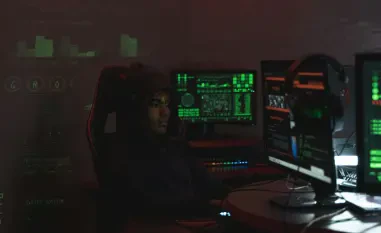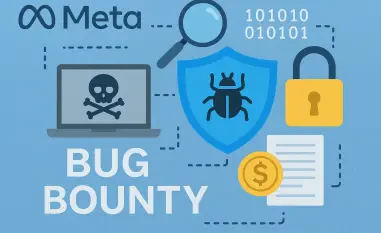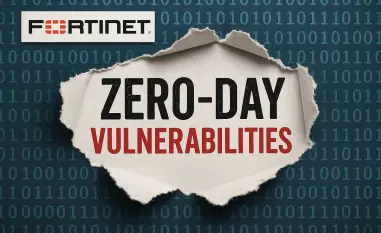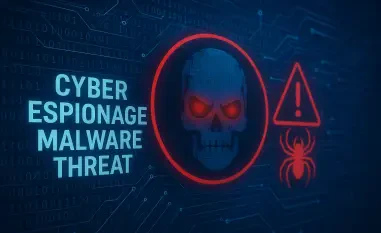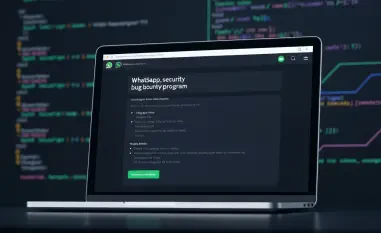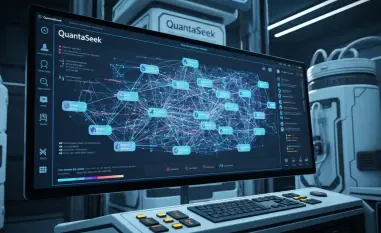Imagine a world where a single line of code, powered by artificial intelligence, can bypass the most robust cybersecurity defenses in mere seconds, unleashing chaos on critical infrastructure and personal data alike. This chilling reality is no longer a distant threat but a pressing concern that dominated the conversations at Black Hat 2025, one of the most influential gatherings of cybersecurity professionals globally. Held in Las Vegas, this annual conference brought together industry leaders, researchers, and innovators to confront the escalating dangers of AI-driven cyberattacks. At the forefront of these discussions was Nicole Perlroth, a former New York Times cybersecurity reporter, whose keynote address sounded a stark alarm about AI’s potential to supercharge cyber threats. Her warnings, coupled with insights from experts across the field, underscored an urgent need to rethink traditional defenses in an era where technology evolves faster than solutions.
Unveiling AI’s Dark Side at Black Hat
Black Hat stands as a cornerstone event for the cybersecurity community, a place where the brightest minds converge to dissect emerging threats and showcase cutting-edge solutions. This year’s conference drew thousands of attendees, including representatives from major tech firms like Microsoft and Mimecast, all eager to grapple with the implications of artificial intelligence in the cyber realm. The atmosphere was charged with a mix of innovation and concern, as speakers and participants alike recognized that AI, while a powerful tool, poses unprecedented risks when wielded by malicious actors.
Nicole Perlroth’s keynote emerged as a pivotal moment, casting a spotlight on how AI is transforming the threat landscape. With her background in covering global hacks and digital espionage, Perlroth brought a unique perspective, illustrating the ways AI automates and amplifies attacks that once required significant human effort. Her address set the tone for broader discussions, emphasizing that the cybersecurity industry must act swiftly to address vulnerabilities exposed by this technological leap.
The event also served as a critical platform for collaboration, uniting diverse voices from researchers to corporate leaders. Panels, workshops, and live demonstrations offered attendees a chance to engage directly with the challenges and opportunities AI presents. As conversations unfolded, a clear message emerged: the intersection of AI and cybercrime demands not just technical innovation but a fundamental shift in strategy and mindset across all sectors.
Key Insights from Black Hat: AI as Threat and Defense
The core of Black Hat 2025 revolved around a sobering reality—AI’s dual nature as both a weapon for cybercriminals and a shield for defenders. Perlroth’s warnings about the automation of sophisticated attacks, such as phishing schemes and deepfake manipulations, echoed through the conference halls, resonating with attendees who see these threats unfolding in real time. Alongside her insights, other experts highlighted the professionalization of cybercrime, noting how AI lowers the barrier for entry, enabling even novice attackers to launch devastating campaigns.
Beyond the alarming trends, discussions also turned to AI’s potential as a defensive mechanism. Industry leaders showcased how machine learning can enhance real-time threat detection and response, offering a glimmer of hope against the rising tide of attacks. Yet, a recurring theme was the inadequacy of technology alone to solve these problems, with many speakers advocating for systemic changes in policy, training, and international cooperation to keep pace with evolving dangers.
The conference painted a vivid picture of a landscape in flux, where the speed and scale of AI-driven threats outstrip traditional countermeasures. From keynote addresses to heated panel debates, attendees were left with a profound understanding of the stakes involved. The following sections delve into specific highlights, capturing the depth of insights and innovations that defined this landmark event.
Perlroth’s Keynote: AI-Driven Threats on the Rise
Nicole Perlroth took the stage with a compelling narrative, detailing how AI accelerates cyber threats by automating intricate attacks at an unprecedented pace. She described scenarios where adaptive malware, powered by machine learning, evolves faster than security patches can be deployed, leaving organizations vulnerable. Drawing from her extensive reporting on global cyber incidents, Perlroth painted a grim picture of a world where traditional defenses are increasingly obsolete.
Her address zeroed in on tangible impacts, such as ransomware campaigns targeting critical infrastructure like hospitals and power grids. She cited recent disruptions in supply chains as evidence of AI’s role in amplifying the reach and damage of these attacks. Perlroth’s stark warnings were reinforced by security researchers in attendance, who shared data on how AI-generated threats are becoming more personalized and harder to detect.
The urgency of her message was palpable, as she urged the audience to recognize the asymmetry between attackers and defenders in this new era. While cybercriminals exploit AI with agility, many organizations remain tethered to outdated systems and reactive approaches. This keynote served as a wake-up call, challenging the industry to rethink its priorities and adapt to a rapidly shifting battlefield.
Panel Talks: Balancing AI’s Risks and Rewards
Panel discussions at Black Hat provided a forum for dissecting AI’s complex role in cybersecurity, with experts debating its potential as both a threat and a solution. A recurring concern was the use of deepfakes to exploit human error, tricking employees into divulging sensitive information through hyper-realistic audio or video. Speakers noted that such tactics are becoming alarmingly common, often backed by nation-state actors seeking strategic advantages.
Representatives from Microsoft emphasized the importance of real-time AI monitoring to preempt attacks, likening their approach to a digital rapid-response team. However, other panelists cautioned that technological solutions must be paired with robust ethical guidelines to prevent misuse. The consensus leaned toward Perlroth’s advocacy for international cooperation, with many arguing that fragmented national policies hinder a unified defense against global threats.
These conversations revealed a nuanced balance between innovation and caution, as participants grappled with how to harness AI’s benefits without amplifying its dangers. The diversity of perspectives—from corporate strategies to academic research—highlighted the multifaceted nature of the challenge. Ultimately, the panels underscored that addressing AI’s risks requires a collective effort, bridging gaps between technology, governance, and human behavior.
Hands-On Learning: Workshops and Live Demos
Beyond speeches and debates, Black Hat offered immersive learning opportunities through workshops and live demonstrations, allowing attendees to confront AI-driven threats head-on. Participants engaged in simulations that replicated real-world cyberattacks, experiencing firsthand the speed at which AI can infiltrate systems. These exercises exposed the scale of modern challenges, from automated phishing to malware that adapts in real time.
One notable session focused on testing defensive strategies against AI-powered attacks, providing practical insights into building more resilient systems. Attendees collaborated to identify weaknesses in existing protocols, sharing ideas on how to counter threats through proactive measures. Feedback from these workshops revealed a shared sense of urgency, with many emphasizing the need for continuous skill development to stay ahead of intelligent adversaries.
The hands-on nature of these activities fostered a dynamic environment, encouraging dialogue and innovation among diverse groups. Cybersecurity professionals left with actionable takeaways, better equipped to tackle the evolving landscape. These sessions reinforced a key message of the conference: theoretical knowledge must be matched with practical expertise to address the tangible risks posed by AI in cybercrime.
Innovations on Display: New Tools to Combat AI Threats
The exhibition floor at Black Hat buzzed with technological advancements, as companies like Mimecast and Zimperium unveiled AI-powered tools designed to combat automated attacks. Product demonstrations showcased solutions for enhanced threat detection, capable of identifying anomalies in network traffic before they escalate into breaches. These innovations offered a concrete response to the conference’s focus on AI’s disruptive potential.
One standout was a platform integrating machine learning to predict and neutralize ransomware attempts, addressing a critical pain point for many organizations. Vendors emphasized user-friendly designs, ensuring that even non-technical teams could leverage these tools effectively. Such developments signaled a shift toward accessibility in cybersecurity, broadening the reach of advanced defenses.
These displays provided a counterpoint to the grim warnings of escalating threats, illustrating that AI can be a powerful ally when directed toward protection. Attendees explored how these tools integrate with existing systems, gaining insights into scalable solutions. The innovations on display underscored a hopeful narrative—that with the right resources, the industry can build resilience against even the most sophisticated AI-driven assaults.
Looking Ahead: Courage and Collaboration in the AI Era
Black Hat 2025 concluded with a resounding call for bold leadership and systemic change, inspired by Nicole Perlroth’s urgent plea to confront AI-enhanced cyber threats with determination. Her message, woven through the event’s many discussions, emphasized that the professionalization of cybercrime demands a response far beyond mere technological fixes. Panels and workshops alike echoed the need for ethical governance, urging policymakers to establish frameworks that prioritize transparency and accountability.
The event also sparked a renewed focus on cross-sector collaboration, with industry leaders advocating for partnerships between private companies, governments, and academic institutions. This consensus points to a long-term vision where updated regulations and shared intelligence form the backbone of cybersecurity. Black Hat served as a catalyst for these trends, highlighting that the future hinges on uniting innovation with human-centered strategies.
Reflecting on the conference, it became clear that the path forward requires courage to challenge outdated norms and invest in proactive measures. Participants departed with a commitment to drive change, whether through adopting cutting-edge tools or championing international dialogue. As the cybersecurity community looks toward the coming years, from 2025 to 2027 and beyond, the lessons from this gathering will fuel efforts to build a more secure digital world, one where resilience and collaboration stand as the strongest defenses against intelligent adversaries.






